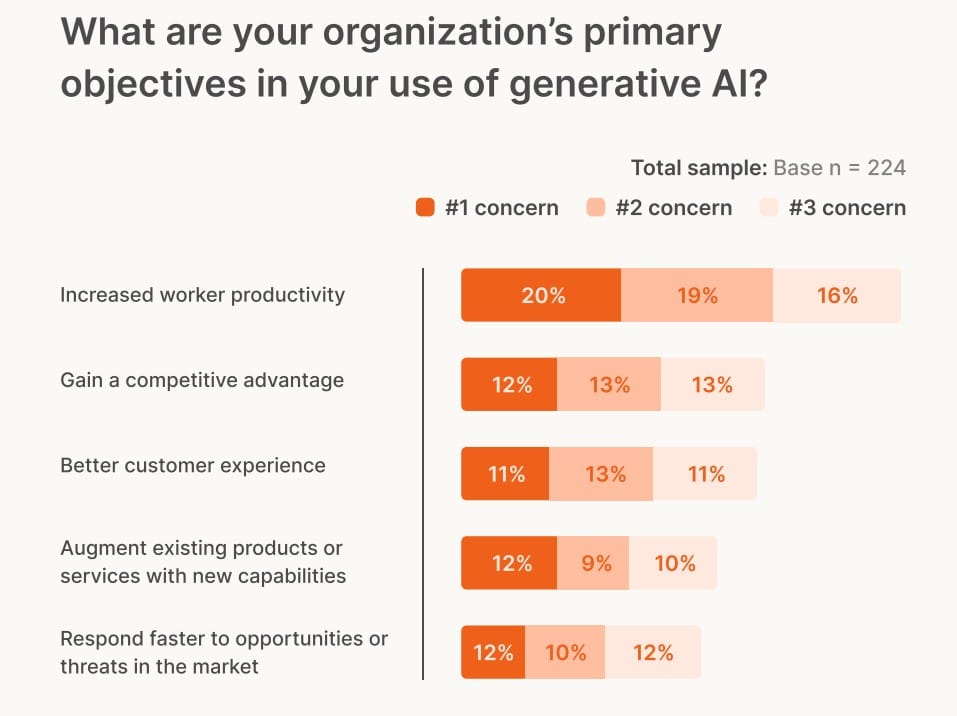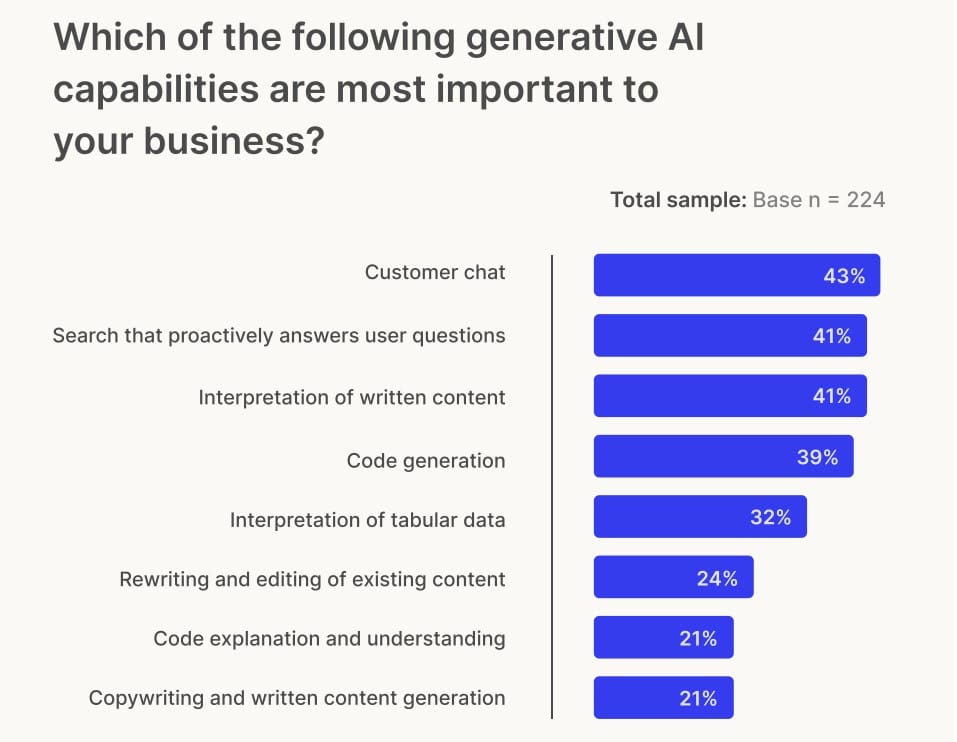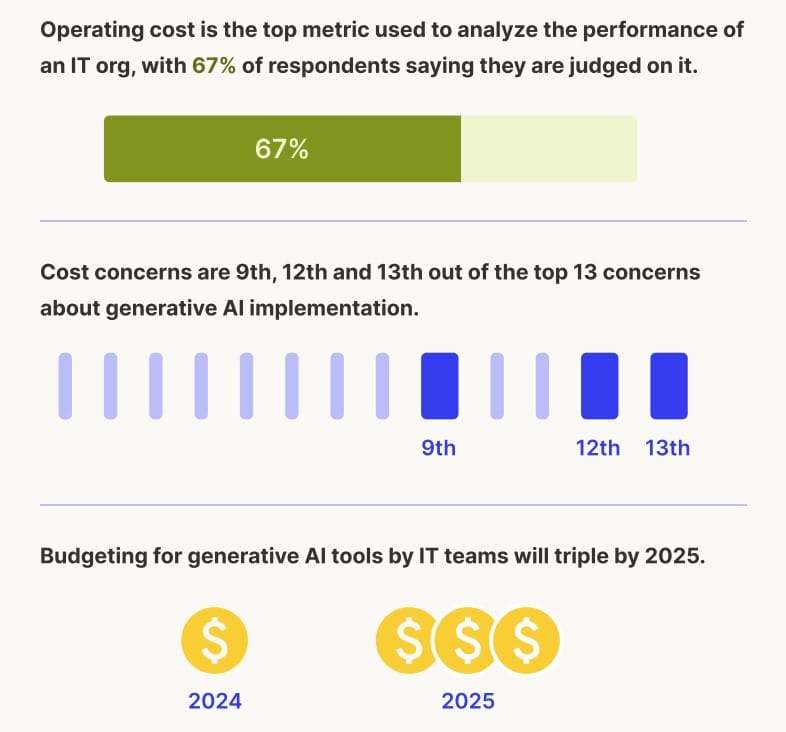The AI hype rolls on—and whether it’s truly representative of the reality, it’s more than enough to send IT teams into turmoil in a mad deployment race. As great as the promise of generative AI is, so too is the threat of being left behind if businesses take a “wait and see” approach, which has been the sensible thing to do in the past. So unlike other hype cycles that have come before it, IT leaders are moving quickly to invest in and implement this tech, reveals new research from enterprise work assistant and AI platform Glean and technology research and advisory firm ISG.
“Today’s IT leaders have lived through multiple hype cycles heralding new technologies as transformative, and this study demonstrates that these leaders see something different in generative AI,” said Arvind Jain, Glean CEO and co-founder, in a news release. “Companies are moving with unprecedented speed to invest in and deploy generative AI. As a result, they require solutions that enable them to adopt this powerful new technology quickly without taking on unnecessary risk. With the right partners, enterprises can unleash the productivity and operational efficiencies of generative AI and avoid negative consequences.”

Key findings from the study:
In a role frequently evaluated on its ability to reduce costs (leaders said this was the number one metric they’re evaluated against) and distinguish hype from real business value, IT leaders are eager to spend on generative AI.
- Budget for generative AI (within IT budgets) is expected to nearly triple by 2025. Respondents reported that generative AI projects consumed an average of 1.5 percent of budgets in 2023, and are expected to rise to 2.7 percent in 2024, and 4.3 percent in 2025.
- Companies with higher revenue tend to plan on investing more in generative AI. For companies with more than $5 billion in revenue, 26 percent plan to invest more than 10 percent of their IT budget in generative AI in 2025.
- 53 percent of leaders said that generative AI will pull budget away from other IT initiatives, and 52 percent also disagreed with the notion that generative AI is a distraction from more important IT activities.

Not only are IT leaders making big financial investments in generative AI, they’re also willing to take on some risk to do so quickly.
- More than a third (34 percent) of leaders surveyed disagreed with the idea that it’s better to slow down generative AI adoption than risk negative consequences, suggesting that some IT leaders are willing to make moves fast and bring on new solutions quickly, rather than wait to see how the cycle plays out.
- Only 8 percent of leaders surveyed said that their biggest concern about implementing generative AI was that the capabilities were changing too fast for them to be able to invest yet. Instead, their biggest concern is around a lack of expertise in generative AI in their organization.
- 47 percent of those surveyed said they believe they’re ahead of their competitors in their organization’s use of generative AI. Of those, 16 percent strongly believe that they’re ahead, and 31 percent believe so less strongly. 22 percent disagree that they’re ahead of their competitors, and 31 percent believe that they’re in the middle of the pack. These results suggest that while many leaders might think they’re out in front of their competitors, they’re not confident about it.
With such rapidly increasing investment in generative AI, do companies have a clear method for measuring return on investment? Not quite yet.
- 28 percent of respondents said they’re generating positive ROI from generative AI initiatives, and 31 percent said that they believe they’re generating positive ROI, but don’t have hard data to support this belief. 17 percent said they are not generating positive ROI yet, but they expect they will in the next year; 6 percent said they don’t expect to generate positive ROI in the next year, and 17 percent say it’s too early to tell.
- Employee productivity was cited as the number one metric used to evaluate the ROI of generative AI, with 57 percent of respondents saying that it’s a metric they use to measure effectiveness.
- For those companies that have already implemented some generative AI tools through pilots or other programs, 46 percent of respondents said that the results were a little better or much better than they’d initially expected, indicating that these early trials are driving increased budgets for the next year.

Download the full report here.
This survey was commissioned by Glean. To develop this report, ISG surveyed 224 senior-level IT leaders (VP and C-suite) based across the United States and Europe. Leaders work at companies with at least 1,000 employees and at least $100 million in annual revenue. The survey was conducted in November 2023.








